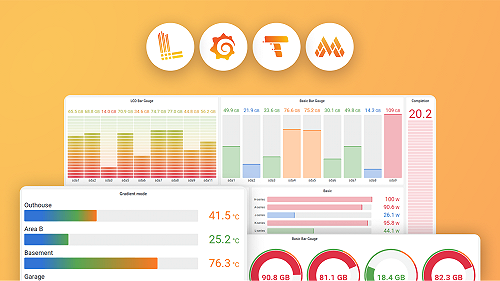Warning
Grafana Assistant is currently in Public Preview. This feature is subject to change without warning.
Prompting guide
Grafana Assistant relies heavily on the context you provide to perform its tasks effectively. Some context is automatically included, while other context you provide by using the @ key or by clicking the @ icon in the sidebar chat box.
The most influential input is the text you type into the chat box.
Use mentions to add context
Using the @ mention feature helps the assistant provide more accurate and efficient responses. When you specify a data source (such as Prometheus, Loki, or Tempo) or other specific items, the assistant can:
- Focus on relevant metrics, logs, or traces
- Use the correct query language (PromQL, LogQL, etc.)
- Provide data source-specific best practices
- Save time by avoiding the need to determine the data source type
- Give more precise and actionable recommendations
If you know what you’re looking for, be specific. Include technical details like metric names. Use the @ mention helper by typing it or using the icon to add context.
For example, instead of asking “Show me error rates”, specify “Show me error rates from @datasource” or click the @ icon and select it from the pop-up menu.
Ten tips for effective prompting
When prompting Grafana Assistant, we recommend following these ten guidelines:
1. Be clear and specific about what you want to achieve
Bad: Tell me about my logs
Good: Have you noticed an uptick of errors in the logs in @my-logs-datasource?2. Break down complex tasks into smaller, manageable steps
Bad: Make a dashboard showing my CPU usage
Good: Find the CPU usage for my @datasource HTTP servers, then help me create a panel showing the 95th percentile3. Provide relevant context using the @ feature when referencing code or documentation
Bad: How do I fix this error?
Good: I'm seeing this error in @my-dashboard: "Failed to fetch data from Prometheus". Can you help me troubleshoot?4. Remember that the assistant maintains context within a conversation
The assistant will assume you are referring to things previously mentioned in the same conversation.
Bad: What's wrong with it?
Good: Looking at the error rate panel we just created, why is it showing spikes every 5 minutes?5. Start a new conversation when switching topics
Start fresh when you begin a new topic or if the chat has been going on for too long.
Bad: (continuing a long conversation about dashboards) Now help me with my Kubernetes setup
Good: (starting new conversation) I need help setting up Kubernetes monitoring with @prometheus-datasource6. Use natural language rather than trying to write commands
Bad: /query rate(http_requests_total[5m])
Good: Can you help me calculate the request rate over the last 5 minutes from @prometheus-datasource?7. Refine your request if the response isn’t quite what you need
If the response isn’t what you expected, rephrase your request or provide additional context.
Bad: That's not what I wanted
Good: I see you found the error rate, but I actually need to see the error count per endpoint. Can you modify the query to group by path?8. Start broad, then refine based on the assistant’s response
Bad: Show me exactly how to fix my dashboard
Good: I'm having issues with my dashboard performance. What metrics should I look at first? ... Now that we've identified the high memory usage, how can I optimize the queries?9. Politely correct the assistant and provide clarification when needed
If you receive an incorrect or incomplete response, politely correct the assistant and provide clarification.
Bad: That's wrong
Good: That's incorrect - the service is actually running on port 8080, not 9090. Could you adjust the query accordingly?10. Include examples when explaining what you want to achieve
Bad: I want a dashboard like the one in production
Good: I want to create a dashboard similar to our production one that shows error rates, but I need it to include the new /api/v2 endpoints. Here's a screenshot of the current dashboard for reference.What’s next?
- Check out the full list of features
- Browse the frequently asked questions
- Understand usage and limits



